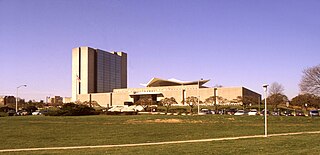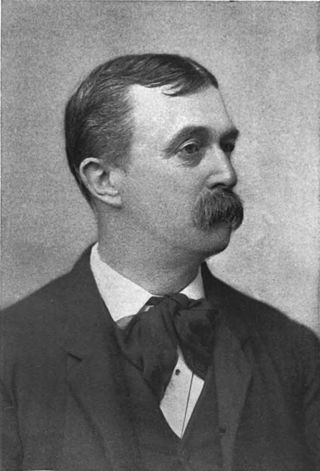
The Library of the Surgeon General's Office, later called the Army Medical Library, was the institutional medical literature repository of the U.S. Army Surgeon General from 1836 to 1956 when it was transformed into the National Library of Medicine.

The Library of the Surgeon General's Office, later called the Army Medical Library, was the institutional medical literature repository of the U.S. Army Surgeon General from 1836 to 1956 when it was transformed into the National Library of Medicine.
The Library of the Surgeon General's Office was established in 1836 when Joseph Lovell, then Surgeon General, purchased reference books and journals for his office. In 1840 the library published its first list of publications in a manuscript notebook. In 1864, the library printed its first catalog containing 2100 volumes.
In 1867, the Library, along with the new Surgeon General's office, was moved to Ford's Theatre, site of the tragic assassination of President Abraham Lincoln in April 1865. (The theater had been closed and remodelled in the intervening two years.) The new Office/Library site was taken over by the U.S. Army to house a cluster of important post-Civil War medical activities of the Surgeon General's Office. The most significant were the archive of Civil War medical records (essential for verification of veterans' pension claims), the Army Medical Museum (now the National Museum of Health and Medicine), the editorial offices for preparation of the multi-volume Medical and Surgical History of the War of the Rebellion , and the Library of the Surgeon General's Office.

The library published its first list of bibliographies in 1869 and in 1871, the decided to develop its collection nationally. The library's goal was to "contain every medical book published in this country and every work relating to public health and state medicine." This collection would be "as complete as possible in all publications relating to military organizations, medicine, and allied sciences." The library strove to provide "an universal library of references". In 1879 the library began publishing Index Medicus , a periodical listing the titles of current medical articles, books, reports, and other medical literature. This achievement, as well as the creation of the Index Catalogue of the Surgeon General's Office (1880), was largely the legacy of Dr. John Shaw Billings, Director of the Library from 1865 to 1895.
When the Army's needs outgrew the capacity of the former theater, several of the units were moved in 1887 to a new building, the Army Medical Museum and Library, on the nearby National Mall (7th Street and South B Street [now Independence Avenue], SW, the present site of the Smithsonian's Hirshhorn Museum).
From 1920 to 1925, the library was directed by Major General Robert Ernest Noble. [1] In 1922, the library was renamed the "Army Medical Library" (AML). In 1927, using funds from the Carnegie Museums of Pittsburgh, Index Medicus merged with the Quarterly Cumulative Index forming the Quarterly Cumulative Index Medicus . From 1937 until 1942, the library ran a program, "Medicofilm," which provided microfilm access to medical literature to patrons. In 1941 the library published The Current List of Medical Literature a "rapid finding aid" to all current articles and microfilm copies in the library's possession.

The AML administration opposed a proposed reorganization and created the Association of Honorary Consultants to the Army Medical Library as a lobbying group to keep the facility within the U.S. Army. Chauncey Leake headed the group and important contributions were made by Michael DeBakey, Joseph McNinch and Harold W. Jones. A transfer to the Public Health Service (PHS) was strongly opposed, with one alternative being incorporation under the Smithsonian Institution. In 1952, the facility was renamed the "Armed Forces Medical Library".
On 13 March 1956, Senators Lister Hill and John F. Kennedy submitted Bill S.3430 to Congress, which promoted "the progress of medicine and advanced national health and welfare by creating the National Library of Medicine". On 3 August 1956 President Dwight D. Eisenhower signed the legislation which transformed the "Armed Forces Medical Library" into the "National Library of Medicine". The Library collection was thus transferred from the control of the United States Department of Defense to that of the PHS of the Department of Health, Education and Welfare.
Several collections of the library's papers are held at the National Library of Medicine. [2] [3] [4] [5] [6]

The United States Public Health Service is a collection of agencies of the Department of Health and Human Services concerned with public health, containing nine out of the department's twelve operating divisions. The Assistant Secretary for Health oversees the PHS. The Public Health Service Commissioned Corps (PHSCC) is the federal uniformed service of the PHS, and is one of the eight uniformed services of the United States.
MEDLINE is a bibliographic database of life sciences and biomedical information. It includes bibliographic information for articles from academic journals covering medicine, nursing, pharmacy, dentistry, veterinary medicine, and health care. MEDLINE also covers much of the literature in biology and biochemistry, as well as fields such as molecular evolution.

The United States National Library of Medicine (NLM), operated by the United States federal government, is the world's largest medical library.

Rupert Lee Blue was an American physician and soldier. He was the fourth Surgeon General of the United States from 1912 to 1920. He served as president of the American Medical Association in 1916–17.

Hugh Smith Cumming was an American physician, and soldier. He served as the fifth Surgeon General of the United States from 1920 to 1936.

Thomas Parran was an American physician and Public Health Service officer. He was appointed the sixth Surgeon General of the United States from 1936 to 1948, and oversaw the notorious Tuskegee syphilis experiment and Guatemala syphilis experiment.

Leonard Andrew Scheele was an American physician and public servant. He was appointed the seventh Surgeon General of the United States from 1948 to 1956.

Leroy Edgar Burney was an American physician and public health official. He was appointed the eighth Surgeon General of the United States from 1956 to 1961.

William H. Stewart was an American pediatrician and epidemiologist. He was appointed tenth Surgeon General of the United States from 1965 to 1969.

Julius Benjamin Richmond was an American pediatrician and public health administrator. He was a vice admiral in the United States Public Health Service Commissioned Corps and served as the United States Surgeon General and the United States Assistant Secretary for Health during the Carter Administration, from 1977 to 1981. Richmond is noted for his role in the creation of the Head Start program for disadvantaged children, serving as its first national director.

John Shaw Billings was an American librarian, building designer, and surgeon. However, he is best known as the modernizer of the Library of the Surgeon General's Office of the Army. His work with Andrew Carnegie led to the development and his service as the first director of the New York Public Library. Billings oversaw the building of the Surgeon General's Library, which was the nation's first comprehensive library for medicine. Because of his approach to improving public health and hospitals, Billings headed the U.S. Census Office's division of Vital Statistics and oversaw statistical compilation of censuses. With Robert Fletcher, Billings developed Index Medicus, a monthly guide to contemporary medicine that ran for 16 months until his retirement at the Medical Museum and Library. At the latter end of his work with the military, Billings aided the United States' Secretary of the Treasury in adjusting the organization of the military hospitals. With his growing credibility in the medical field, Billings also oversaw work done to aid those struggling with yellow fever. He also served as Johns Hopkins Hospital's medical advisor, authored reports regarding criteria for medical and nursing curricula, and hospital design. Although his name is not included in the infamous "Big Four" at Hopkins, Billings made major contributions, by the means of the Johns Hopkins Hospital's architecture, infrastructure, and curriculum for the Johns Hopkins School of Medicine.

The National Museum of Health and Medicine (NMHM) is a museum in Silver Spring, Maryland, near Washington, DC. The museum was founded by U.S. Army Surgeon General William A. Hammond as the Army Medical Museum (AMM) in 1862; it became the NMHM in 1989 and relocated to its present site at the Army's Forest Glen Annex in 2011. An element of the Defense Health Agency (DHA), the NMHM is a member of the National Health Sciences Consortium.

Colonel Fielding Hudson Garrison, MD was an acclaimed medical historian, bibliographer, and librarian of medicine. Garrison's An Introduction to the History of Medicine (1913) is a landmark text in this field.
Index Medicus (IM) is a curated subset of MEDLINE, which is a bibliographic database of life science and biomedical science information, principally scientific journal articles. From 1879 to 2004, Index Medicus was a comprehensive bibliographic index of such articles in the form of a print index or its onscreen equivalent. Medical history experts have said of Index Medicus that it is “America's greatest contribution to medical knowledge.”

Founded by U.S. Army Brigadier General George Miller Sternberg, MD in 1893, the Army Medical School (AMS) was by some reckonings the world's first school of public health and preventive medicine. The AMS ultimately became the Army Medical Center (1923), then the Walter Reed Army Institute of Research (1953).

The Army Medical Museum and Library (AMML) of the U.S. Army was a large brick building constructed in 1887 at South B Street and 7th Street, SW, Washington, D.C., which is directly on the National Mall. It was designated a National Historic Landmark in 1965 and added to the National Register of Historic Places in 1966. The building was demolished in 1969, and the collections at the focus of the landmark designation were dispersed.
Atherton Seidell, a founder of the American Documentation Institute, was a chemist and who became a strong proponent of the use of microfilm for the management of scientific information. As Peter Hirtle writes, "Through a series of seminal articles in Science in the 1930s and 1940s, Seidell established a theoretical justification for the use of microfilms as a means of facilitating scientific information exchange."

Colonel Harold W. Jones, M.D., is noted as the Director of the U.S. Army Medical Library from 1936 through 1945, who made signal contributions to military medicine and to the evolution of the United States National Library of Medicine (NLM).

Frank Bradway Rogers was a medical doctor and librarian who was instrumental in changing the Army Medical Library into the National Library of Medicine. He helped develop an electronic system of storing and retrieving information called Medical Literature Analysis and Retrieval System (MEDLARS) which replaced the old index cataloging system. American Libraries included Rogers on the list of "100 of the most important people in 20th-century librarianship."

The Bureau of State Services (BSS) was one of three principal operating agencies of the United States Public Health Service (PHS) from 1943 until 1966. The bureau contained the PHS divisions that administered cooperative services to U.S. states through technical and financial assistance, and included significant programs in community health, environmental health, and workforce development.